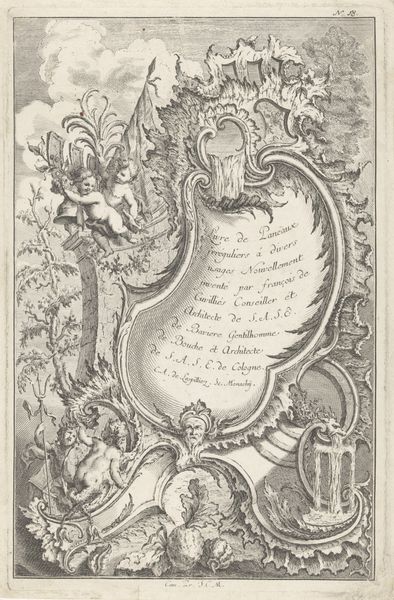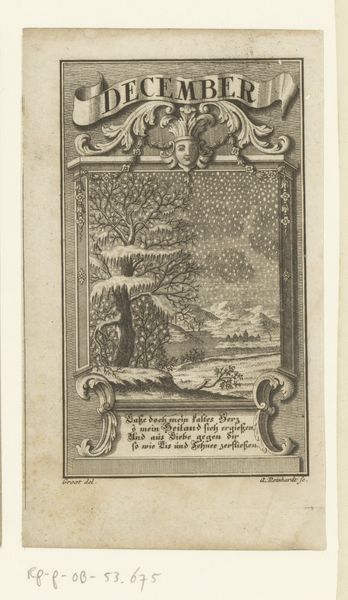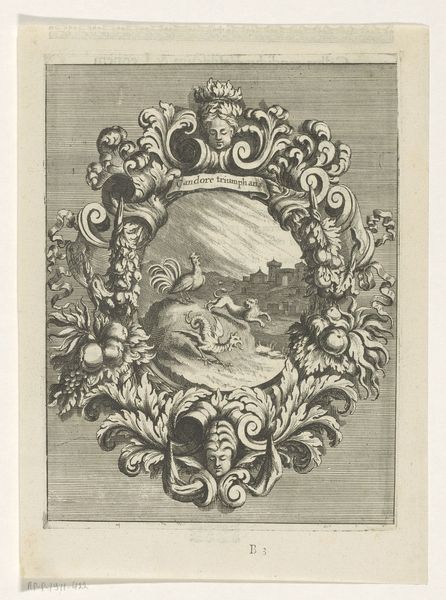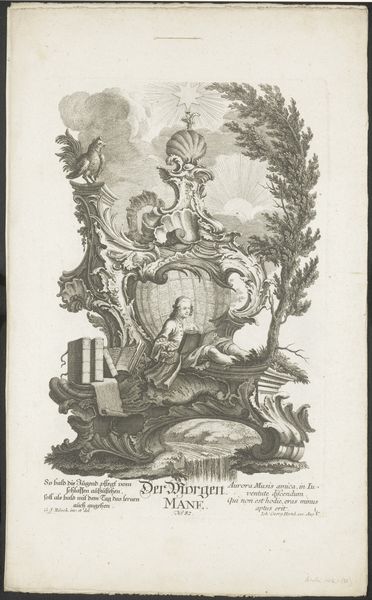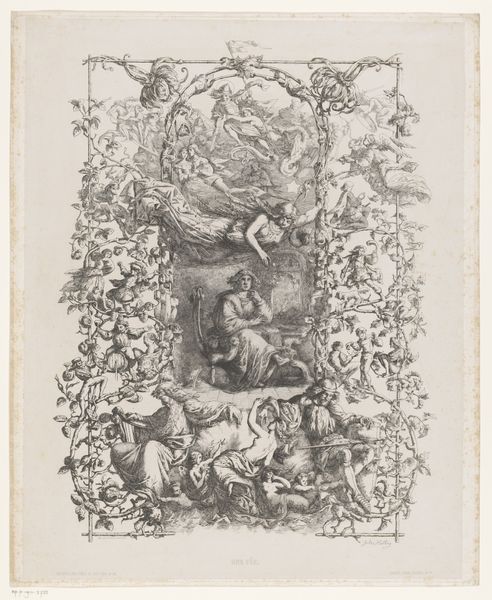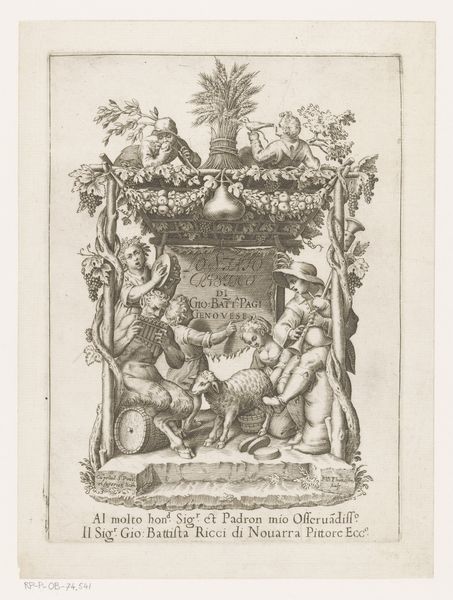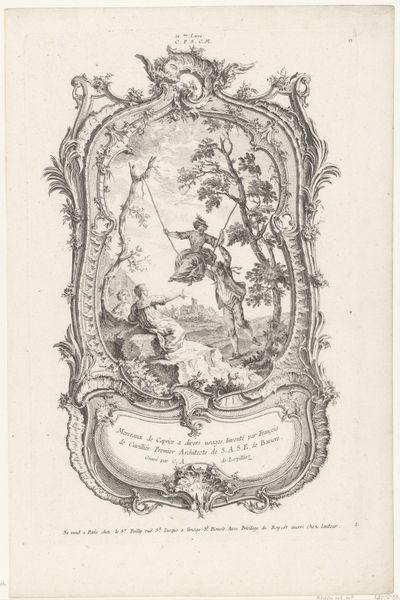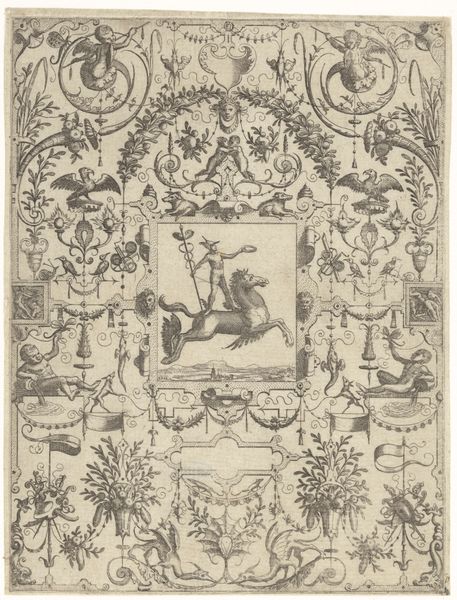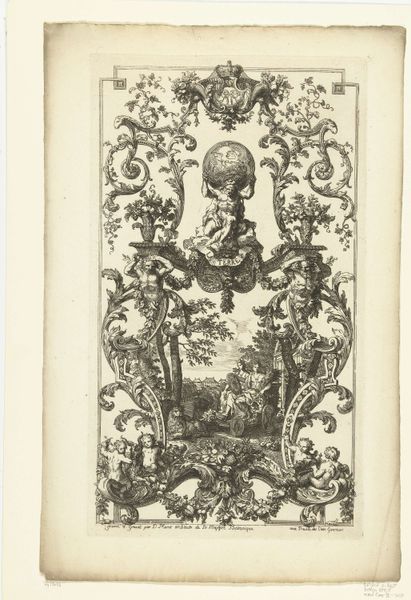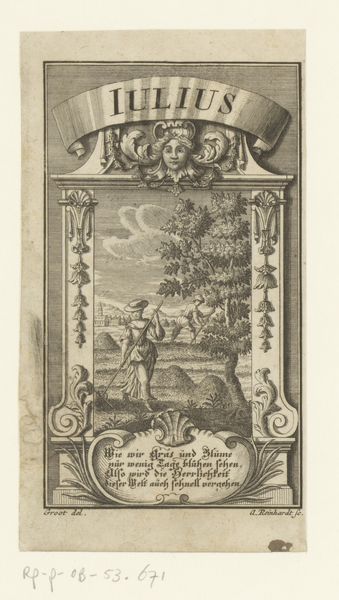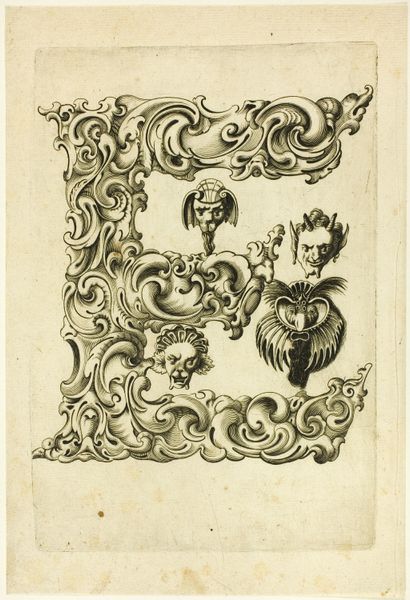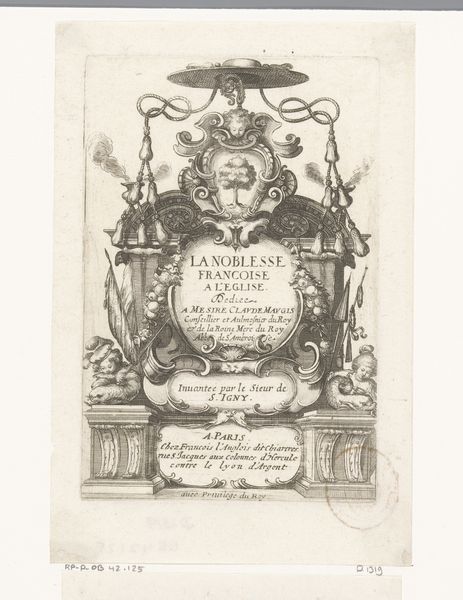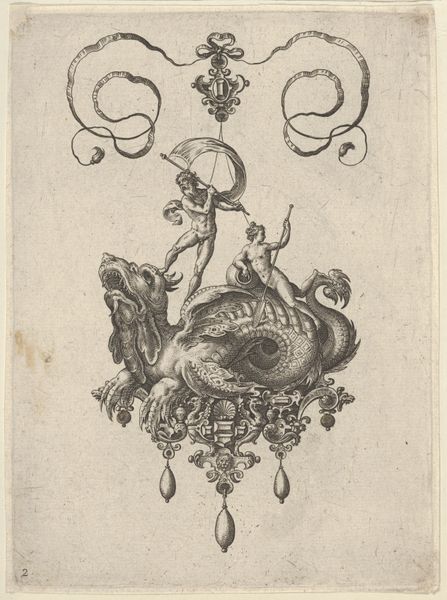
graphic-art, print, engraving
#
graphic-art
#
baroque
# print
#
old engraving style
#
form
#
personal sketchbook
#
ink drawing experimentation
#
line
#
sketchbook drawing
#
sketchbook art
#
engraving
Dimensions: height 333 mm, width 222 mm
Copyright: Rijks Museum: Open Domain
This print was made by Carl Albert von Lespilliez in the 18th century. At its heart is the motif of the cartouche, a frame, which has been used to hold inscriptions for centuries. Note how this cartouche is adorned with putti, those chubby, winged infants, who have their roots in classical antiquity and frequently appear in Renaissance art as symbols of divine love. Similarly, coats of arms appear, a practice that stretches back to the Middle Ages, symbolizing family lineage and power. Yet the symbolism doesn't stop there. Here, the cartouche has been overtaken by a floral ornamentation. This act of framing and embellishment speaks to a deep human impulse: our desire to contain, define, and enhance that which we find precious. Think of reliquaries in churches across Europe – gothic containers adorned with gold and jewels, designed to elevate and protect sacred relics. We see this same impulse echoed here. This print is not merely decorative; it is a testament to our enduring need to give form and meaning to the world around us.
Comments
No comments
Be the first to comment and join the conversation on the ultimate creative platform.
